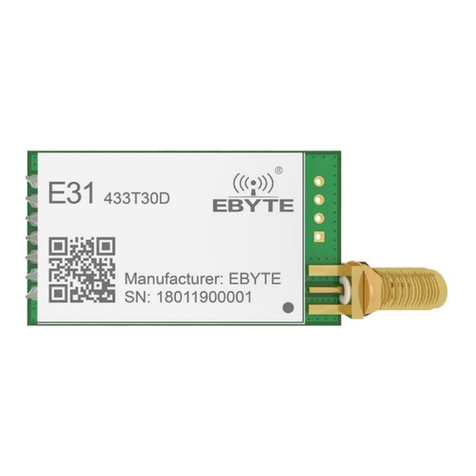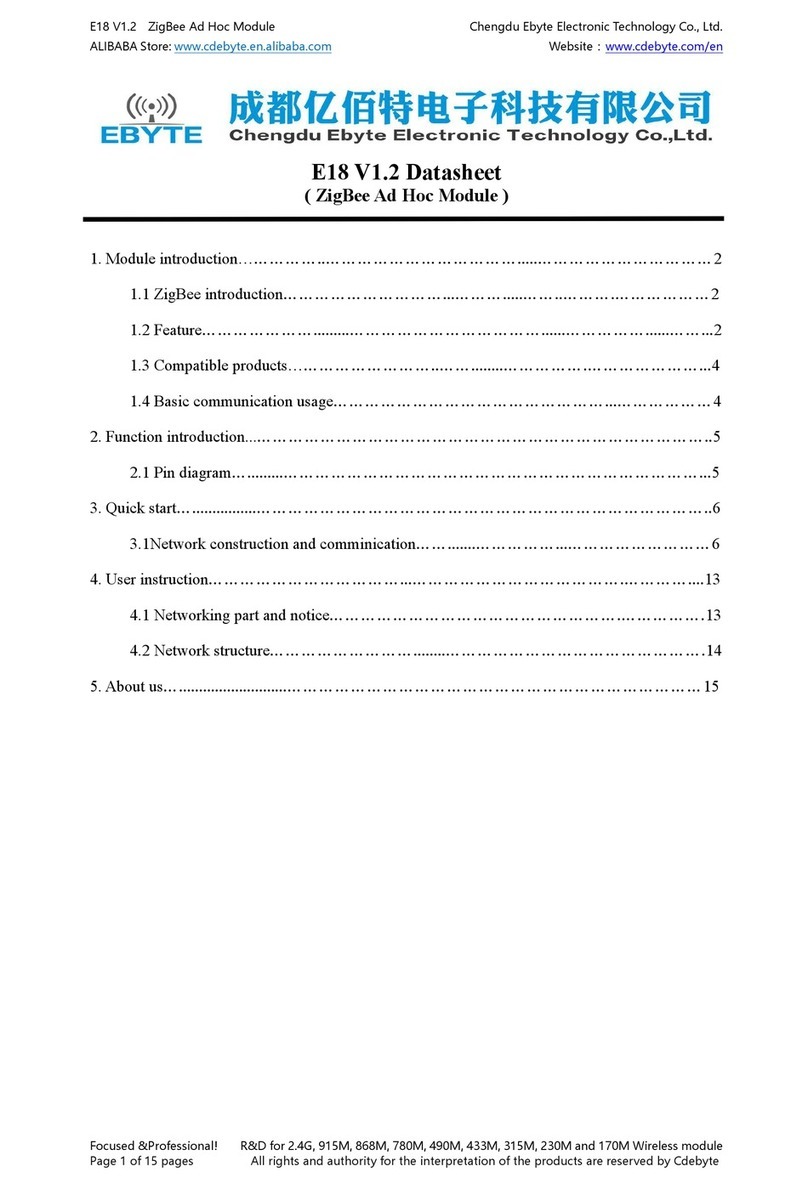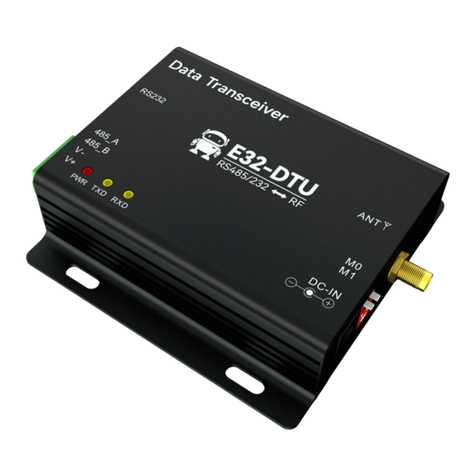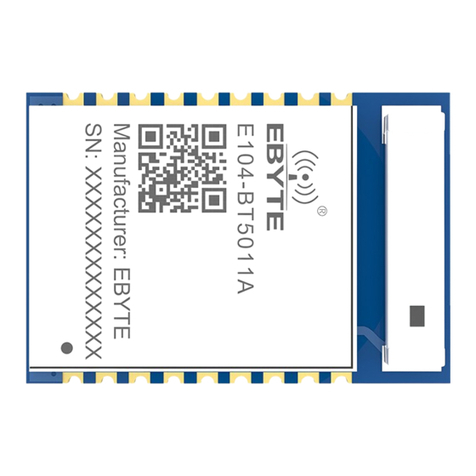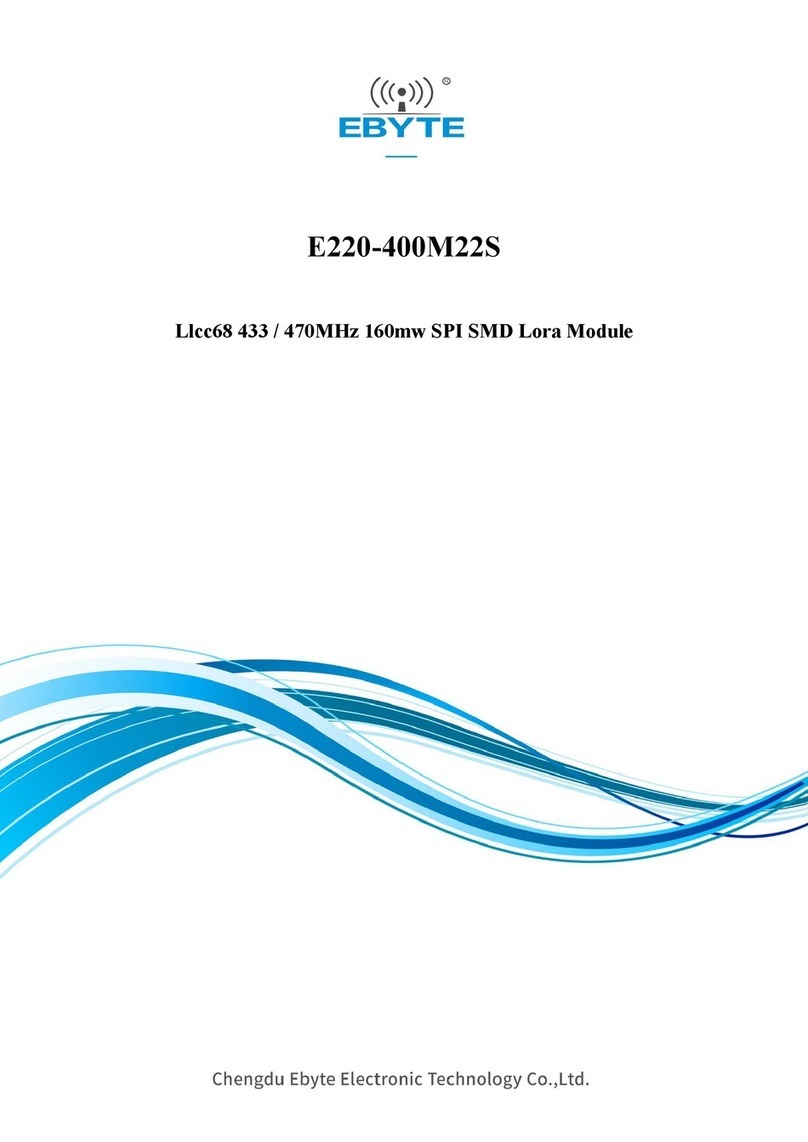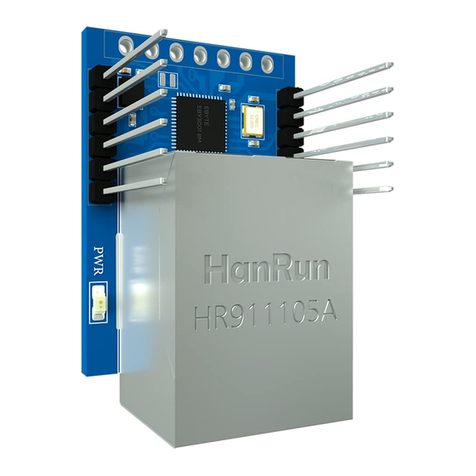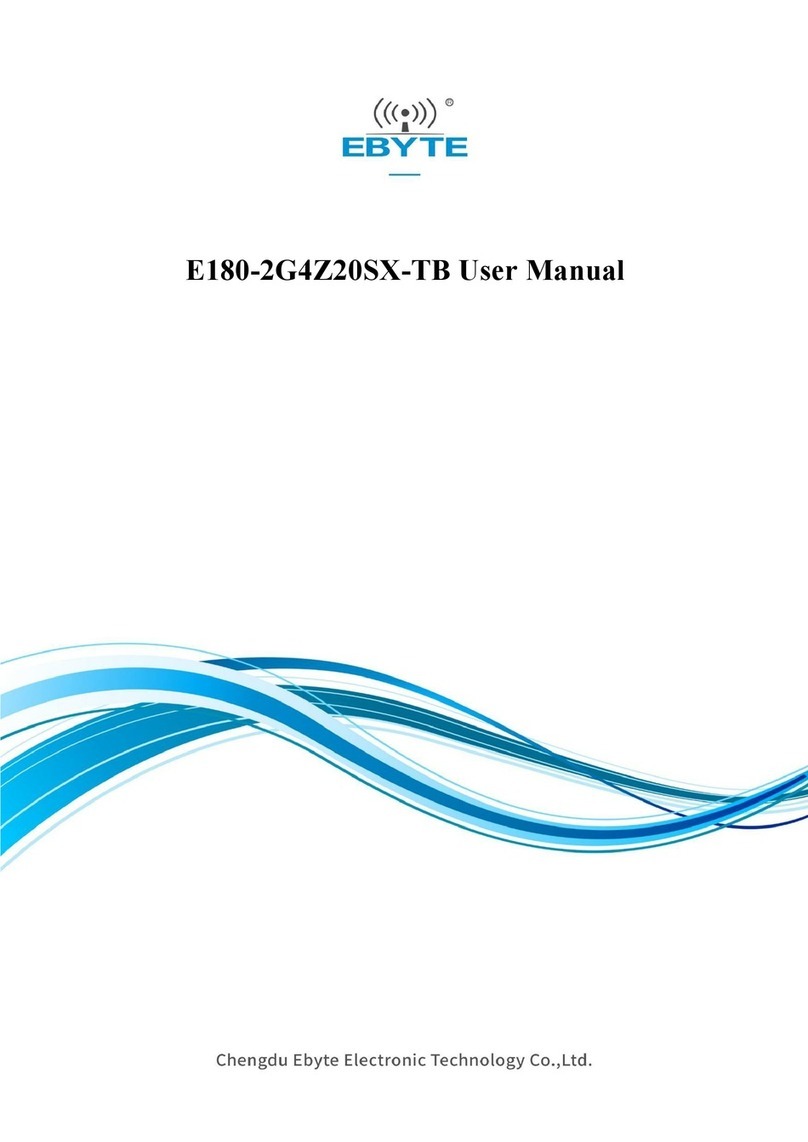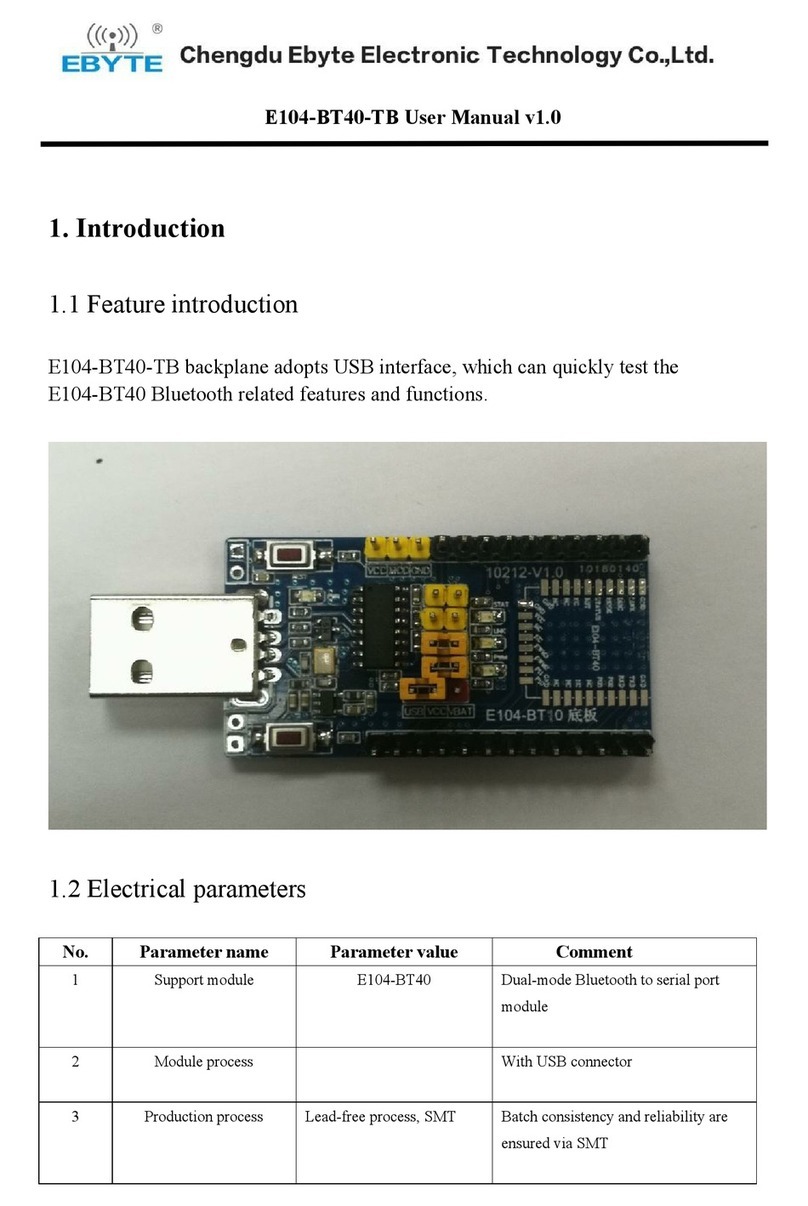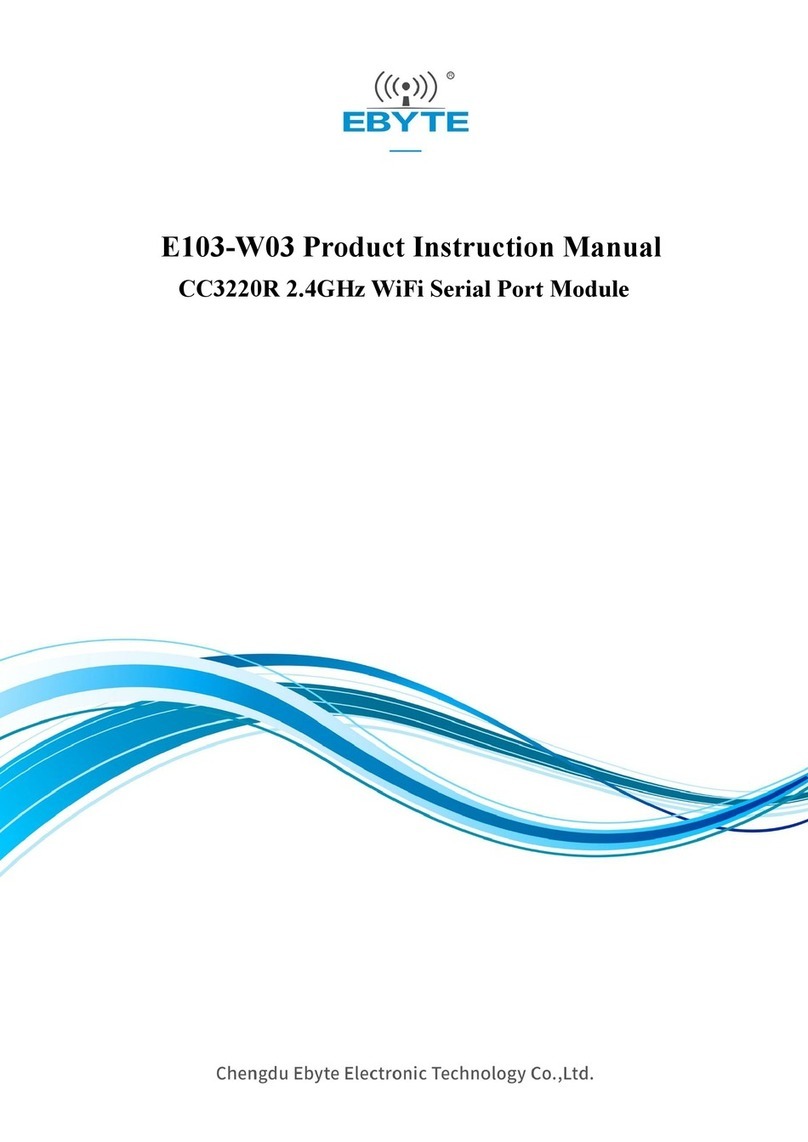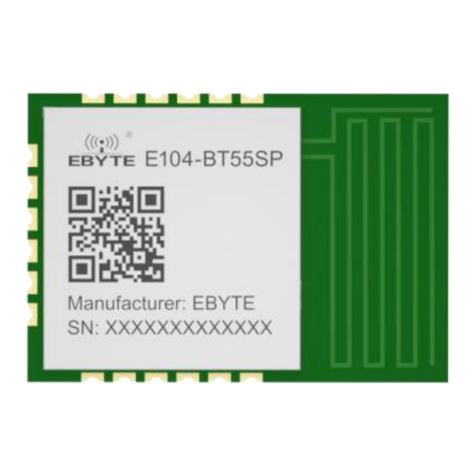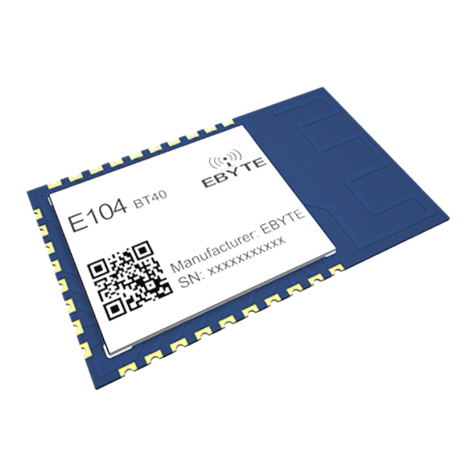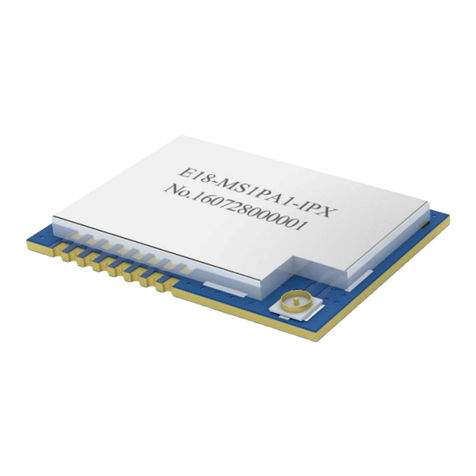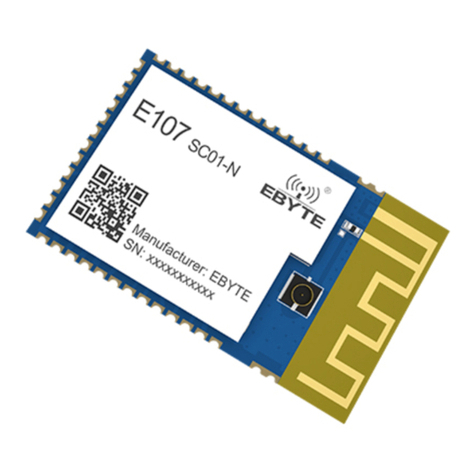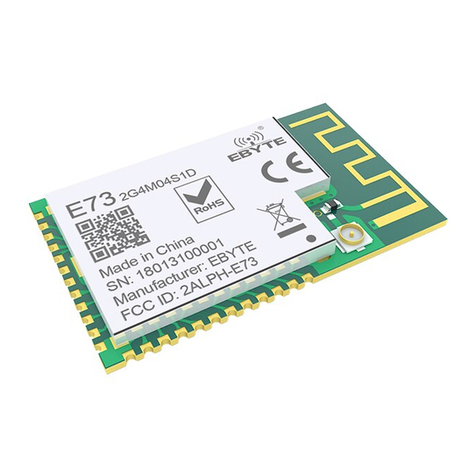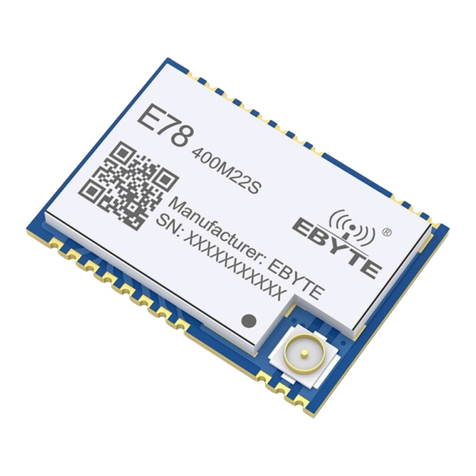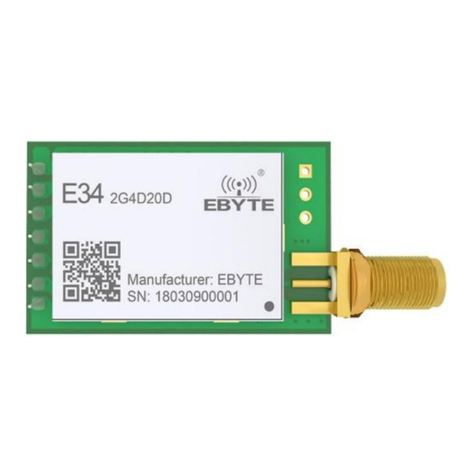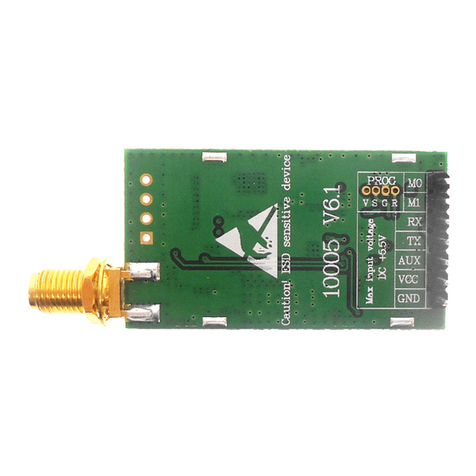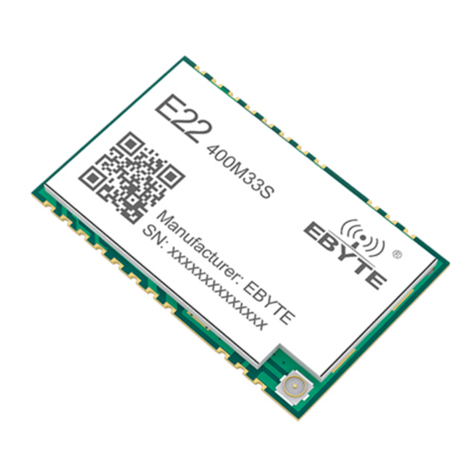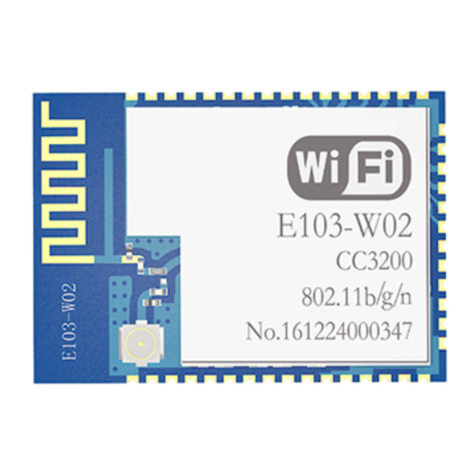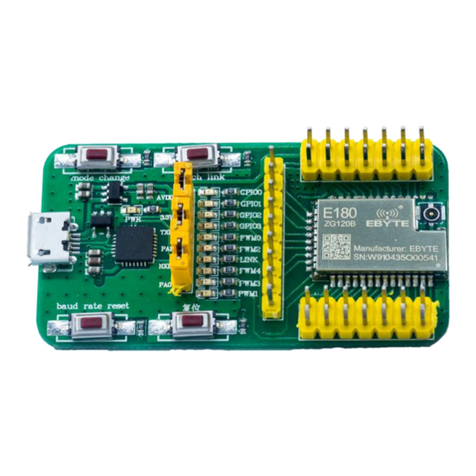
Chengdu Ebyte Electronic Technology Co.,Ltd. E28-2G4T27SX User Manual
Copyright ©2012–2020, Chengdu Ebyte Electronic Technology Co., Ltd.
Contents
Contents ····················································································································································································································································1
1.Product Overview......................................................................................................................................................................................................3
1.1 Brief Introduction........................................................................................................................................................................................... 3
1.3 Application..................................................................................................................................................................................................... 3
2. Technical Parameters................................................................................................................................................................................................4
2.1 Limit parameter.............................................................................................................................................................................................. 4
2.2 Operating parameter....................................................................................................................................................................................... 4
3. Mechanical Characteristics.......................................................................................................................................................................................5
3.1. Dimension Plan............................................................................................................................................................................................. 5
3.2. Pin Definition................................................................................................................................................................................................ 6
4. Recommended Connection Diagram........................................................................................................................................................................7
5. Functional Description............................................................................................................................................................................................. 7
5.1. Fixed Transmission....................................................................................................................................................................................... 7
5.2. Broadcast....................................................................................................................................................................................................... 8
5.3. Broadcast Address......................................................................................................................................................................................... 8
5.4. Monitor Address............................................................................................................................................................................................8
5.5. Module Reset.................................................................................................................................................................................................8
5.6. AUX Description...........................................................................................................................................................................................8
5.6.1 Indication of serial output....................................................................................................................................................................8
5.6.2 Indication of wireless transmission..................................................................................................................................................... 9
5.6.3 Module in configuration process......................................................................................................................................................... 9
6. Operation Modes...................................................................................................................................................................................................... 9
6.1. Mode Switch..................................................................................................................................................................................................9
6.2. Transmission Mode (Mode 0)..................................................................................................................................................................... 10
6.3. RSSI Mode (Mode 1).................................................................................................................................................................................. 10
6.4. Ranging Mode (Mode 2)............................................................................................................................................................................. 10
6.5. Configuration mode (Mode 3).....................................................................................................................................................................10
7. Command Format...................................................................................................................................................................................................11
7.1. Default parameter values.............................................................................................................................................................................11
7.2. Reading Operating Parameters.................................................................................................................................................................... 11
7.3. Reading Version Number............................................................................................................................................................................ 11
7.4. Reset Command...........................................................................................................................................................................................12
7.5. Parameter Configuration Commands.......................................................................................................................................................... 12
8. Hardware design.....................................................................................................................................................................................................14
9. FAQ........................................................................................................................................................................................................................ 15
9.1 Communication range is too short.............................................................................................................................................................15
9.2 Module is easy to damage........................................................................................................................................................................... 15
9.3 BER(Bit Error Rate) is high......................................................................................................................................................................... 15
10.Production Guidance............................................................................................................................................................................................. 16
10.1 Reflow soldering temperature.................................................................................................................................................................... 16
10.2. Reflow soldering curve..............................................................................................................................................................................16
11. Related products................................................................................................................................................................................................... 17
12. Antenna Guidance................................................................................................................................................................................................ 18
13. Package for batch order........................................................................................................................................................................................ 19
Revision history..........................................................................................................................................................................................................19
